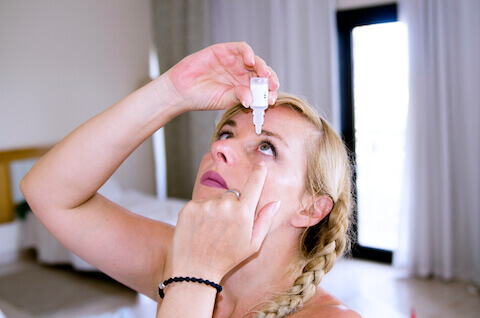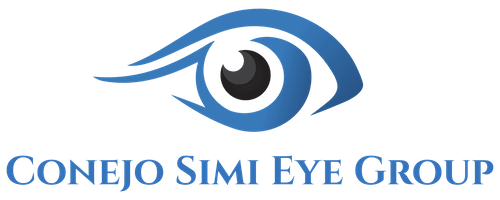What Is Dry Eye?

Dry eye is the common name given to a group of conditions collectively known as Ocular Surface Disease (OSD). The 3 major causes of OSD include Dry Eye Syndrome, Blepharitis and Ocular Allergy. It is very common to have more than one of these conditions concurrently. They all may share many of the same symptoms including redness, scratchiness, burning, itching, crusty eyelids, excessive tearing, mild discharge, light sensitivity, fluctuating vision, contact lens intolerance and swollen lids to name a few.
Often distinguishing between these disorders plus other less common causes of OSD so to treat appropriately is difficult even for an eye doctor. Sometimes even with the right diagnosis, effective treatment can be elusive as the same treatment can be helpful for one patient but not for another. There is no “one best treatment for all” and often quite a bit of trial and error is involved in seeking the best treatment for you. It is important to understand that for many patients OSD cannot be “cured” and treatment goals are directed towards relieving your symptoms as much as possible. Dr. Corwin is a longtime sufferer of OSD.
How To Diagnose Ocular Surface Disease
Diagnostic tests include but are not limited to checking the osmolarity (saltiness) of your tears and if there are signs of inflammation present. Specific stains are also used to check for drying out of the surface of your eye. The volume of tears, how much is produced in a specific time and how fast they evaporate is noted. Finally, the appearance of the edges of your lids, thickness of your tear oil layer and how often and how completely you blink is evaluated. Additionally, allergy testing may be recommended if that cause of OSD is suspected. All of these tests help Dr. Corwin determine what is causing your symptoms.
Dry Eye Syndrome
According to the American Academy of Ophthalmology, almost 5 million people in this country over the age of 50 suffer from dry eye syndrome. In Southern California we live in a desert climate so the incidence is much higher than in other parts of the United States.
Causes of Dry Eye Syndrome
There are 2 types of dry eye syndrome: 1. Aqueous deficient and 2. Evaporative. You have 2 types of tears, basal and reflexive. Basal tears are what keep your eye moist all the time and are necessary for proper visual function. Reflexive tears are less important and are produced when your eye is irritated say when you get a speck of dirt in it and their purpose is simply to wash away the irritant. Unfortunately they are poorly regulated and tend to cause excessive tearing. This is how one of the symptoms of dry eye syndrome may actually be too much tearing. There are 3 layers to the basal tears. The watery or aqueous layer which allows tears to spread evenly across your eye, the mucin layer which helps to ensure hydration of your eye for proper function and the oil layer which prevents evaporation of your tears. Aqueous deficient dry eye occurs when you don’t produce enough of the watery or mucin layer. This can occur due to advancing age, more commonly in women. Certain prescription or even over the counter medications can also cause this to happen. Finally, patients with any autoimmune disease frequently have aqueous deficient dry eye. Evaporative Dry Eye is more common and occurs due to a deficiency of the oil layer thus allowing rapid evaporation of the tears. The oil layer comes from the meibomian glands along the edge of the lids and if not working properly cause evaporative dry eye. This is what is called Meibomian Gland Dysfunction (MGD).
Treatment of Dry Eye Syndrome
For aqueous deficient dry eye, the tried and true method of treatment is instillation of artificial tear eyedrops, gels or ointments. Unfortunately this does not always provide adequate symptom relief. Currently the only way to actually increase your production of tears is with a TrueTear unit. This is an electronic device, the tip of which inserted into the nasal cavity to stimulate the nerves which produce tears. The unit is used several times per day. Another strategy to increase the volume of tears is not to produce more tears but to slow their drainage so they back up into the eye. “Punctual plugs” are small blockers about the size of a pinhead placed in the tear drains of the lids near the nose.
Treatment of evaporative dry eye is centered upon increasing the oil production from the meibomian glands at the edge of the lids. Omega 3 fatty acids, lid scrubs, warm compresses and low dose oral antibiotics are all used with varying degrees of success. Sometimes a treatment called Lipiflow is helpful if the glands have not been irreversibly scarred up yet. This is a painless 10 minute in office procedure designed to regenerate clogged, poorly functioning meibomian glands.
Testimonial Videos On The New Lipiflow Treatment
Gloria, Dry Eye Patient
Trudy, Dry Eye Patient
Ocular Inflammation: The Common Denominator in Ocular Surface Disease
No matter the cause of your OSD, you will have chronic inflammation of the surface of your eye which is the root cause of most of your symptoms. In addition to treatments specific to your diagnosis already outlined here, you will often need ongoing anti-inflammatory medication . Depending upon the severity of your OSD, there are several prescription eyedrops options which may be tried, including Restasis, Xiidra, Cequa, and cortisone. Also some people benefit from what are known as serum tears. This is a custom made medication produced from your own blood in which the body’s own ant-inflammatory mediators are concentrated into an eye drop.
If you are having any of the symptoms of ocular surface disease or have been previously treated for “dry eye” but are still having issues, we invite you to contact our office for a “dry eye consultation”.


